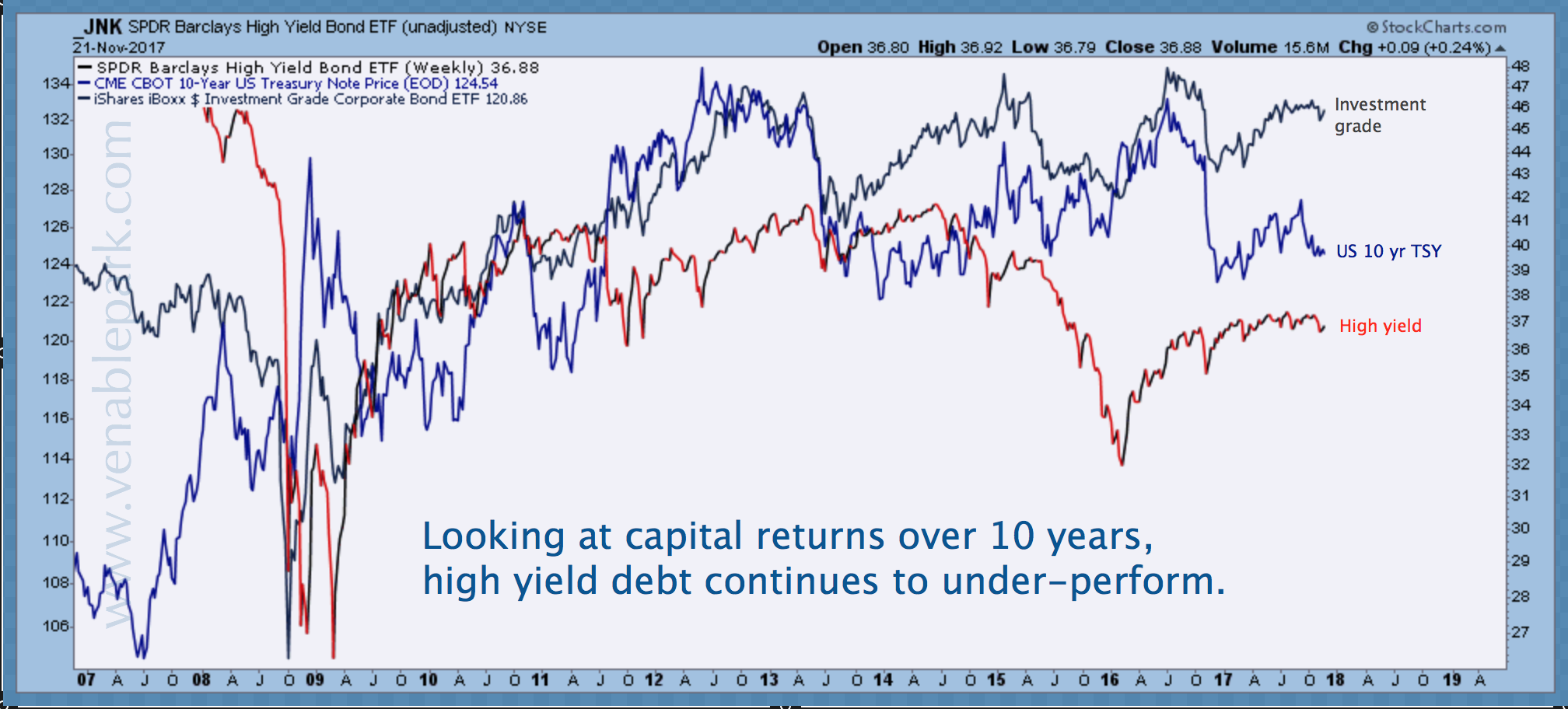Many good points are made in this recent discussion with Fed up author Danielle Di Martino Booth (see two important caveats I would add below).
Bitcoin’s rapid rise in value is sending a warning signal, according to former Fed insider Danielle DiMartino Booth. She says, “To me, Bitcoin is a reflection of panic. It’s a reflection of people trying to get money into a safe place knowing the major governments of the developed world have got their printing presses running 24/7. It is a reflection of anxiety in fiat currencies and the fact it’s not practical to go back to a gold standard. Here is a direct video link.
Two important caveats I would add. First, not all bond risk is equal. DiMartino Booth is specifically talking about the risk to corporate bond holders who have overpaid for debt securities in a grab for cash flow. This lowered yields to the de minimus range. Meanwhile the market price of corporate bonds tends to move with the equity cycle. So as shown below since 2007, when downturns begin credit risk is realized and holders start liquidating corporate bonds and equities all at once. Many corporate bonds lost 30-50% of their market value in the 2008-09 downturn, others went to zero as their issuers went bankrupt. There is no safety and little diversity benefit in holding over-valued corporate debt. Hence the timeless truth that reaching for yield is capital destructive.
This chart from my partner Cory Venable shows the relative price decline of investment grade corporate debt (grey), versus hi yield or junk bonds (in red) and 10 year government treasuries (in blue) during the 2008-09 bear market and the sharp but short sell-off in early 2016. In times of liquidity crunch and falling markets, capital typically flows out of risky assets and into government bonds, especially in North America.
Secondly, Di Martino Booth mentions gold and silver as assets people can buy as a safe place to store savings. As I have said many times, one can hold bullion in their home safe with a portion of their money if it makes them feel more diversified or if one thinks bartering with bullion will be a durable medium of exchange. However, holding the securities of gold and silver companies is not likely to add capital protection, they tend to plunge along with other risk assets in bear markets. Bullion too.
Keep in mind that gold lost 30% of its market value in 2008 and 44% between August 2011 and December 2015. Silver fared worse falling 72% into 2015. What safety of principle? You can read more thoughts about gold here in my 2011 article A word to the gold bugs.


